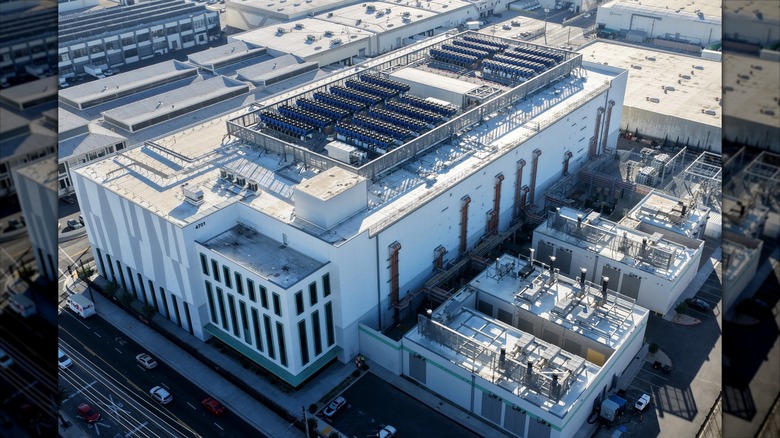These Five US Air Force Bases May Soon Be Home To Private Data Centers
With AI computing and its use exploding exponentially in recent years, so must the data centers that house them. Even with billions being invested in the tech companies that are developing the technology, this isn't as easy as it sounds, because data centers need a lot of space to operate. Because of this, the U.S. Department of the Air Force is putting out an open call for AI companies to lease land from five of its American bases for data center use.
The Air Force bases span the continental U.S. from coast to coast and include Arnold Air Force Base (AED) in Tennessee, Davis-Monthan Air Force Base (DMA) in Arizona, Robins Air Force Base (WRB) in Georgia, Joint Base McGuire-Dix-Lakehurst (WRI) in New Jersey, and Edwards Air Force Base (EDW) in California. Altogether, the Air Force is leasing about 3,100 acres of land on these sites, with nearly two-thirds of the offered property at Edwards Air Force Base alone. The California base, located on the edge of the Mojave Desert, is no stranger to advanced technology; it recently conducted dogfighting war games with AI-controlled fighter jets.
But the proposed data centers would not directly be for military use. While the government doesn't normally offer huge swaths of land to private companies — especially on highly secure military bases — the move is in line with the country's intent to stay atop any AI arms race with other nations. Earlier this year, the Trump administration ordered federal agencies to fast-track the use of AI and find suitable locations on military land where data centers could be built. Executive orders issued in January and July 2025 by President Donald Trump directed federal agencies to fast-track AI adoption and identify military installations suitable for high-energy data center construction.
Private companies will likely take the Air Force up on its offer
Any leases private companies make with the Air Force to use its land will run up to 50 years. The AI market shows no signs of slowing down, and tech companies will need as much viable land as they can get to continue building data centers. Both startups and industry giants like Meta are expanding their AI data centers to expand and refine their products. That's why it's likely that many of these tech companies will take the government up on its offer — especially if it's more affordable than paying for private land.
These companies must submit proposals for how exactly they'd use the land, which may lead to some competition between major AI players like OpenAI and Google. These private companies will be in charge of the financing and design of the data centers, as well as their operation — the Air Force is merely providing the land. Any proposed plans to build the data centers must require a minimum load capacity of 100 megawatts and a total investment value over $500 million, as well as compliance with Air Force leasing and environmental standards.
Companies have until November 2025 to submit their proposals, and the government will likely approve and lock in deals early next year. Leases will run for up to 50 years, though the government may allow extensions if it deems the data centers are advantageous for the government and/or national defense.
These data centers could potentially raise the utility bills of those living nearby
One consequence of massive data centers being built at these five Air Force bases may be increased energy bills for residents living nearby. Data centers – and especially AI data centers — consume a very high level of electricity, as well as water to keep their servers cool. Between the advancing technology and the huge increase in the use of AI products by consumers and businesses alike, the energy being used by these data centers has become nearly insatiable.
Data centers may be to blame for up to 30-40% of all produced electricity in the U.S. by 2030. New power plants will need to be built to meet these demands, but the growth of data centers will likely outpace their construction, which will strain the current grid. This, in turn, raises the energy bills for everyone in the affected area. In fact, this is already happening, with some residents seeing increases in utility bills by over 50%. It's quickly becoming a major concern for many Americans who are already struggling with rising costs elsewhere in their budgets.
Because much of the electricity these data centers are using is sourced from fossil fuels, greenhouse emissions are also increasing, leading to even more climate-related costs down the line. On top of this, a single data center consumes millions of gallons of water each day, which can also increase utility bills in areas where water isn't abundantly available. It's currently unclear where new data centers on Air Force bases will get their power, but it may very well be local grids in the area. This could exacerbate the issue, making it even harder for the tech industry to hide its environmental impact around the world.


